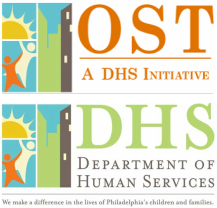Creating a Village
The key to high quality OST programming is well-trained and skilled practitioners because they are responsible for the direct delivery of services to children and youth. (ChildTrends, 2009) It is well-documented that children and youth benefit from access to caring adults who model positive behavior.
This section is targeted to the 70 provider agencies and their OST staff to learn the latest news in the OST provider community, maintain compliance with OST contract requirements, access professional development opportunities as well as obtain program resource, funding and best practice information
This section is targeted to the 70 provider agencies and their OST staff to learn the latest news in the OST provider community, maintain compliance with OST contract requirements, access professional development opportunities as well as obtain program resource, funding and best practice information
8th to 9th grade: how afterschool can help
An article from the Afterschool Snack( A resource of the Afterschool Alliance):
The transition from middle school to high school is a tumultuous one, a transition in which students encounter many possible obstacles. They must navigate shifting social structures and build new relationships in a new and unfamiliar environment, all while dealing with more difficult and rigorous coursework than in previous years.
A number of studies have shown that how students fare in the eighth-to-ninth grade transition can be a powerful predictor of whether or not they will graduate from high school on time, or at all. Educational data show that there are consistently more students in the ninth grade than in either the eighth or the tenth grades, a phenomenon that experts commonly refer to as the ‘ninth grade bulge.’ This is largely attributable to two factors: first, more students fail the ninth grade than any other grade, and second, more students are held back in ninth grade than any other grade. According to the National High School Center, “a disproportionate number of students who are held back in ninth grade subsequently drop out.”
To read more of the article, click here!
The transition from middle school to high school is a tumultuous one, a transition in which students encounter many possible obstacles. They must navigate shifting social structures and build new relationships in a new and unfamiliar environment, all while dealing with more difficult and rigorous coursework than in previous years.
A number of studies have shown that how students fare in the eighth-to-ninth grade transition can be a powerful predictor of whether or not they will graduate from high school on time, or at all. Educational data show that there are consistently more students in the ninth grade than in either the eighth or the tenth grades, a phenomenon that experts commonly refer to as the ‘ninth grade bulge.’ This is largely attributable to two factors: first, more students fail the ninth grade than any other grade, and second, more students are held back in ninth grade than any other grade. According to the National High School Center, “a disproportionate number of students who are held back in ninth grade subsequently drop out.”
To read more of the article, click here!

